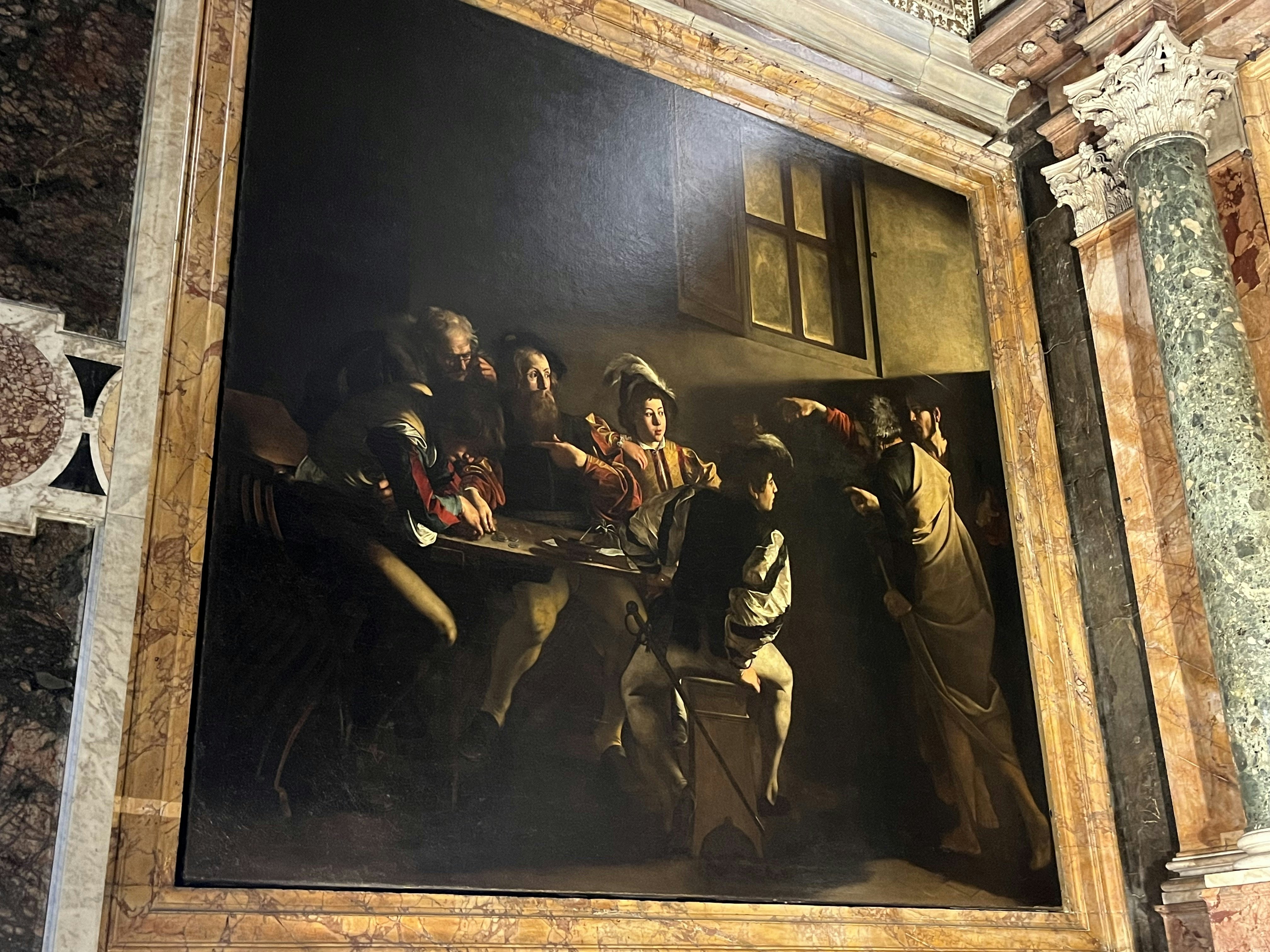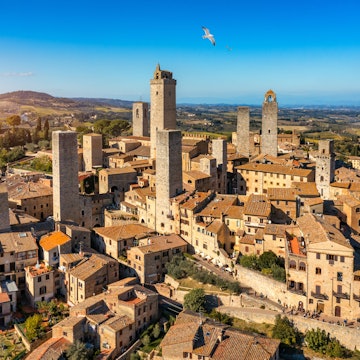
I just got back from a month in Rome... here's what I think you should know

Sep 7, 2022 • 8 min read

Writer Matthew Webster returns from Rome with top tips after spending the month in the city's Banchi Vecchi neighborhood © Matthew Webster / Lonely Planet
If there’s any positive to come out of the last two years, it’s been the opportunity to escape a daily routine and work remotely.
As a writer, most of my work is already spent at my laptop. But my wife, as a yoga instructor, needed to be near her studios in New York City in order to maintain her clients. Not anymore. When everything went online, so did yoga. Now, well into our third year of the pandemic, we are almost entirely remote with the upside of living wherever we want. The first stop on our around-the-world-remote-work adventure: a month in Roma.
Rome is one of my favorite cities in the world. We all know the big players here: the Colosseum, the Vatican, the pasta. But having an extended period of time in this capital city has provided incredible memories and off-the-beaten-path experiences.
Whether you have three days or 30, it’s impossible to see everything. Here are some top tips, advice, and insights I’ve learned after weeks of winding my way through the cobblestone streets, chatting with locals, and living as the Romans do.

What part of the city did you stay in? What was the vibe?
We stayed in Banchi Vecchi, a small enclave just east of the River Tiber and a quick seven-minute walk to the popular Piazza Navona. The area is a nice mix of locals and tourists, lined with boutique shops, wine bars and acclaimed restaurants.
From the Banchi Vecchi, you can easily get to the Vatican and the Castel Sant’Angelo via your choice of two famous bridges over the River Tiber. And while it’s close to everything, it’s not crowded, which was a big selling point for us when planning our trip. A few days in tourist-heavy areas can be fun. But 30 days – we wanted something a little quieter. The vibe is calm, local, artistic (with galleries everywhere – we particularly loved Ceramiche Nicola Fasano) and casually elegant.
The best things to do in Rome may even be free

How did you get around?
Walking in Rome is really spectacular. Since you’re basically living inside of a museum, for me it doesn't make sense to pass up an opportunity to stumble upon something amazing by jumping in cabs everywhere you want to go.
It’s hot in August (when we were there), but put on your coolest summer clothes and make it happen. Plus, Rome has amazing streetside fountains called nasoni. There are over 2500 of them scattered around the city, pumping potable water 24/7. They are constantly running, so don’t get alarmed that you can’t figure out how to turn off the faucet. I utilized them daily on my treks around the city. I filled my water bottle every chance I got (stay hydrated in that Roman sun!) and even splashed some on my face and arms to cool off.
Rome’s buses are vast and efficient. Download an app like Citymapper and bus around the city with ease. When I went to the Palazzo Massimo alle Terme, one of the four national museums of Rome, I was too beat to walk the 40 minutes back to our Airbnb, so I jumped on a bus and was home in 15 minutes.
Travel tip: Bus tickets are available at the many Tabacchi store fronts that you’ll see in every neighborhood. Make sure to validate the bus ticket when you get on to avoid hefty fines.
Did you encounter any Covid-19 restrictions?
N95 masks are still required on all public transportation. When we took day trips out of Rome on the weekends, the train attendants were pretty on top of making sure everyone adhered to the mask policy. I had on a surgical mask that is totally acceptable in NYC, but in Rome, it has to be an N95 – so be sure to plan accordingly. Qualifying masks are available for purchase at every station. Besides that mask mandate, the city felt alive, open, vibrant and happy to be sharing its energy with the world again.
Italy itinerary: Following the Appian Way

Best tips for living like a local in Rome
My favorite thing about visiting any city is finding little things that make me feel like I’m not a tourist. One of my must-know phrases for visiting Italy is "Quali sono le tue cose preferita da fare a Roma?" which means, “what are your favorite things to do in Rome?” We spent a lot of time following the recommendations from the many local shop owners and restaurant workers. When in Rome we made an effort to speak their language. And a little bit goes a long way. Learning phrases like this can get you a behind-the-scenes experience that many tourists never get to have.
Rome vs Florence: how to choose the perfect Italian city for you
These were some of our favorite restaurants:
Tulipane – a modern, women-owned bakery right below our Airbnb. Try the fresh juices in the morning, or if you need a break from pasta, opt for one of their locally-sourced salads.
Forno – a bakery in the Campo de ‘Fiori – I had a simple but delicious pizza and many traditional Roman sweets.
Pane e Salame – near Trevi Fountain for a takeaway panini.
Beppe e i suoi Formaggi – or “Beppe and his Cheeses” has an impressive variety of fresh, local cheese and meats for in-the-know locals.
Giolitti – Out of all the recs I received (because I asked my second favorite phrase "La tua gelataria preferita?" or “What's your favorite gelato place?” to almost everyone I met), I’d go with Giolitti just north of the Pantheon. I got two scoops of gelato and a tray full of pastry sweets. Delicious.
A vegan's guide to eating out in Rome

What did you book in advance of your trip?
Since this wasn’t our first time in Rome, we didn’t feel like we had to plan too much in advance. We weren’t concerned with squeezing all the essential sights into a three-day trip. But if you have limited time, be sure to book in advance for places like the Vatican, the Colosseum and the Museo e Galleria Borghese.
Advice for getting into the Colosseum: Reservations for the Colosseum are online only, so don’t head there expecting to buy a ticket at the gate – they’ll tell you to get on your phone and buy one online. And depending on the time of day, that could mean a wait of up to two hours or more until they have slots available. So book in advance and don’t forget to leave extra hours at the end for the free admission (with your Colosseum ticket) to the Roman Forum.
Tips on reserving your visits to the Vatican and Borghese Gallery: If you didn’t plan ahead for the Vatican, all is not lost. You can get tickets at the door, but that means a very long line. My recommendation is to book all of these sights before you even arrive in Rome. Especially for places like the Borghese Gallery (with masterpieces from Caravaggio, Titian and Raphael), where tickets are often sold out up to a week in advance.
How to see the Sistine Chapel all by yourself — or explore the Vatican Museums on the cheap
For the day-of explorers: If you’re not a planner, or have seen the major sights before, the National Museums of Rome are easily accessible for day-of access. I didn’t buy anything in advance and found myself browsing the incredible Roman artifacts with ease, never jostling for position to snap a picture. Also, The Musei Capitolini - which was crowdless, and is considered one of the first museums in the world - was a huge highlight.
Everything you need to know before visiting Rome
3 secret destinations in Rome: get off the beaten path
The bone-chilling Capuchin Crypt
What starts out as a traditional museum about the Capuchin Friars progresses into a, pardon the pun, bone-chilling experience. And that’s because, after the modern Friar museum, you turn the corner and enter the church’s six-room crypt, where the bones of over 3700 friars adorn the walls and ceilings. There are skulls lined up like wallpaper, vertebrae configured like flowers, a bed of femur bones with a robed skeleton of a Friar resting on top and even a pelvis chandelier. Choose the audio guide (€2, even though online it says €5) for poetic musings on the macabre.
Travel tip: Your shoulders and knees need to be covered out of respect, so plan accordingly, or opt to buy a disposable robe at the museum for an additional 1 euro.
The 7 best day trips from Rome
The storied bridges of Rome
The bridges that cross the River Tiber are usually lively with music. Especially the Ponte Sisto, which connects the classic area of Rome to the hip Trastevere neighborhood. Crowds of tourists and locals gather nightly on the footbridge to enjoy the talented buskers and party the night away. Below, food stalls, river-side restaurants and foosball tables line a pathway along the river. It has a young, energetic vibe, with couples and groups dangling their feet off the bridge, enjoying a Peroni.

Keeping the lights on at San Luigi dei Francesi
Tucked away inside this church on the outskirts of the Piazza Navona are three of Caravaggio’s paintings that you can see for free - or kind of free. There is a timer on the lights that requires a euro or two to keep the paintings illuminated. Some of the tourists around us really didn’t care for this viewing limitation, but I don’t know, it felt very Caravaggio-esque to have to put a little coin in a slot every two minutes to keep the lights on. And if you don’t, chances are, if you wait a bit, someone else will power the lights for you.















